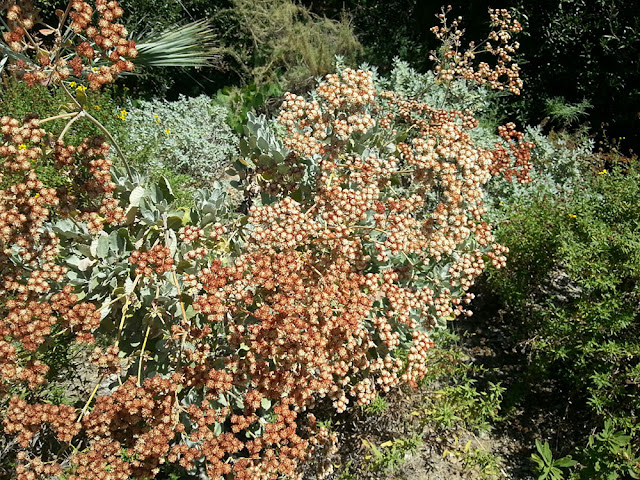It has been a while since I have been on a challenging hike. The type that leave you in tears under the hot summer sun and weight of your pack. I’m not ashamed to say I’ve cried on a trail before, though it was 5 years ago under very different physical and emotional circumstances. I probably wasn’t hydrated enough. I didn’t know then what I know now, which I’m sure still isn’t enough.
Challenging hikes happen to great hikers, so being an okay hiker seeking a challenging hike seemed a little scary. Earlier this week the thought that a hike hadn’t brought me to tears in a while was my way of telling myself I was ready for a challenge. Five, six milers just weren’t cutting it anymore. Sure the scenery was beautiful, but I was ready for more. My IG feed was full of hikers summiting 12 mile hikes with thousands of feet in elevation change. I wanted that. Just not yet.
I chose a moderate hike that should have been just over 7 miles starting at the Top of the World in Laguna Beach and passing through Aliso Canyon Woods, the Dripping Caves and Car Wreck Trail. Arriving at the trail an hour later than I had planned, the sun was still hidden behind the morning ocean clouds which made for a cool start. I didn’t love the first 2 miles of West Ridge trail which is completely exposed, and is heavily populated by both group hikers and cyclist wizzing by.
When Lynx meets Woods Canyon at the bottom of the canyon, I headed towards the junction for Dripping Caves trail. I crossed a series of narrow bridges that were used by hikers and cyclists to avoid the small stream of water. The trail along the canyon floor wasn’t as desolate as Lynx, but much less traveled than the crowded West Ridge trail. Lined with Sycamores, white and yellow blooms, the trail was wide and well taken care of. There wasn’t much trash along the trail, but I also wasn’t going out of my way to pick up trash deep in the bushes because of the many bees along the trail.
I opted to approach Dripping Caves from the South, instead of from the North so I wouldn’t double back and could explore more of the trails. The caves themselves were less than impressive. Legend says they were used by robbers as a hideout after robbing stage coaches or cattle. Personally, I don’t know that I would really call the underside of rock formations caves, but they would provide shelter in a place less explored. Leaving the Dripping Caves I headed North on the Dripping Cave Connector which would take me to the Mathis Canyon trail to Car Wreck Trail. That didn’t go as planned.
The Dripping Cave Connector is a beautiful narrow trail that slightly climbs then descends the side of the canyon. The trail is both rock and sand with wild flowers on either side. About ¾ of the way through just after a short switch back I passed a tree with exposed roots and a cave just beyond it. I stopped to take a photo and noticed I had caught up to 2 hikers that were about 50 feet in front of me and were hiking a narrow portion of the trail that passes through long dry grass. As I started through the meadow I heard the rattling of maracas. Twice. I stopped, took a few steps backwards and turned around. I had never heard a rattle snake before, and although I did not see it, it was such a distinct sound, I have no doubt it was there. I was conflicted on what to do next.
I had options to get back to the top of the canyon, however considering I was by myself I decided to play it safe and retraced my steps back to Dripping Caves to Woods Canyon and headed North to the junction to Mathis Canyon Nature Loop which would take me back to West Ridge and Top of the World. Here’s where it got tough; first mentally, then physically. As I started retracing my steps I was looking side to side and back and forth along the trail making sure I didn’t come across a snake. I was freaking out. I was getting tired. I was alone.
I recently read that a great way to deal with unwanted thoughts or feelings is to get a rock and while holding it redirect those thoughts or feelings to it. That came to mind so I picked up a small rock off the trail and kept saying over and over, “There is no fear in the wilderness.” It reminded me of Cheryl Strayed’s words about fear from Wild:
“Fear...is born of a story we tell ourselves, and so I chose to tell myself a different story from the one women are told. I decided I was safe. I was strong. I was brave.”
“Fear...is born of a story we tell ourselves, and so I chose to tell myself a different story from the one women are told. I decided I was safe. I was strong. I was brave.”
I let that rock take all of my anxieties and just kept moving. As I climbed out of the canyon the mental challenge became physical. The cloud cover had given way to the sun as I hit mile 7 of my ascent and I had a mile left to climb. Fear was the least of my worries as the burn in my thighs was now the only thing on my mind. My fear mantra soon turned into a yogi mantra that I kept repeating: “Everything is temporary.” The climb, the burn in my thighs, the feeling of being hot. All of it was temporary.
10 miles - you’re next and I’m coming for you.
Modern Hiker has a great technical review of this hike here. Visit OC Parks for directions.

























